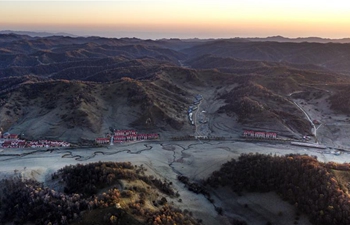CANBERRA, Oct. 31 (Xinhua) -- A special new resin developed by Australia's peak science body, CSIRO, is being trialed at art galleries around the world to preserve masterpieces painted by the likes of Rembrandt and van Dyck.
In a media release on Thursday, the CSIRO said that the resin, or synthetic varnish, was the result of a collaboration between the agency and Australia's oldest and most visited gallery, the National Gallery of Victoria (NGV).
After extensive testing at the NGV, the resin -- designed specifically for conservation and cultural heritage applications -- will now be trialed by conservators working in several of the world's major art institutions, including the Metropolitan Museum of Art in New York.
Already, several works at the NGV have been restored to their former glory and given new protection by the varnish.
Senior Conservator of Paintings at the NGV Carl Villis said on Thursday, "We approached CSIRO to see if they could develop a resin for us, and we were so encouraged by the results we were seeing that we sent samples to galleries around the world for them to trial."
"The feedback so far has been very positive, and we have had the opportunity to use the varnish in recent important conservation treatments of works in our own collection, notably Rembrandt's Two Old Men Disputing and van Dyck's portrait, Philip Herbert, the 4th Earl of Pembroke," Villis said.
The Chairman of Paintings Conservation at New York's Metropolitan Museum of Art Michael Gallagher welcomed the collaborative project, which brought together specialists from the diverse fields of painting conservation and polymer chemistry.
"Thoughtful, fully informed research is essential to addressing the practical challenges of responsibility conserving paintings for the future," Gallagher said in the CSIRO media release on Thursday. "The addition of a stable, affordable and aesthetically appropriate varnish is potentially a major contribution."
CSIRO's Leader of Materials for Energy and the Environment Deborah Lau said using the emerging technology of "flow chemistry" allowed the team to develop the resin in a safer, cleaner, more efficient way than traditional chemical manufacturing.
"Flow chemistry is cutting edge technology that allowed us to develop a bespoke fine art resin with minimal discoloration or cracking over time," Lau said.
"The resin provides a protective coating together with enhancing the visual aesthetic, and can be removed without causing any damage to the underlying paint layers. This means the resin can be re-applied to artworks and protect them for generations to come."













